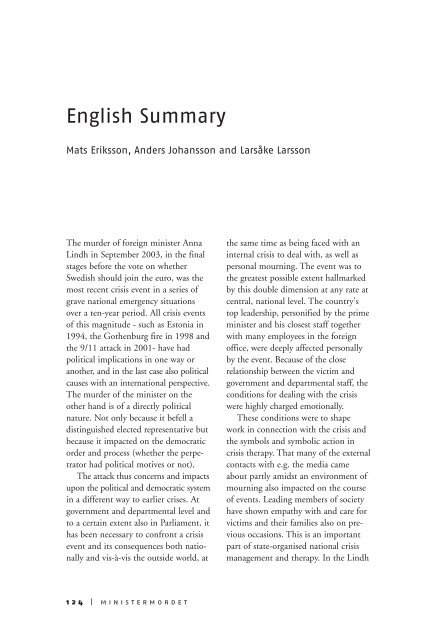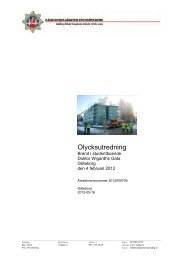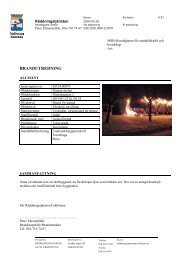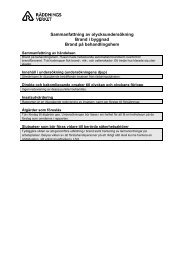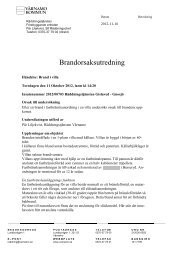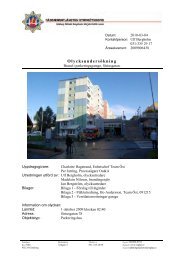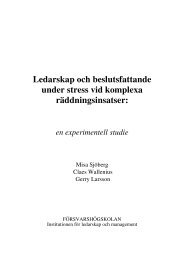Ministermordet - RIB Bibliotek
Ministermordet - RIB Bibliotek
Ministermordet - RIB Bibliotek
Create successful ePaper yourself
Turn your PDF publications into a flip-book with our unique Google optimized e-Paper software.
English Summary<br />
Mats Eriksson, Anders Johansson and Larsåke Larsson<br />
The murder of foreign minister Anna<br />
Lindh in September 2003, in the final<br />
stages before the vote on whether<br />
Swedish should join the euro, was the<br />
most recent crisis event in a series of<br />
grave national emergency situations<br />
over a ten-year period. All crisis events<br />
of this magnitude - such as Estonia in<br />
1994, the Gothenburg fire in 1998 and<br />
the 9/11 attack in 2001- have had<br />
political implications in one way or<br />
another, and in the last case also political<br />
causes with an international perspective.<br />
The murder of the minister on the<br />
other hand is of a directly political<br />
nature. Not only because it befell a<br />
distinguished elected representative but<br />
because it impacted on the democratic<br />
order and process (whether the perpetrator<br />
had political motives or not).<br />
The attack thus concerns and impacts<br />
upon the political and democratic system<br />
in a different way to earlier crises. At<br />
government and departmental level and<br />
to a certain extent also in Parliament, it<br />
has been necessary to confront a crisis<br />
event and its consequences both nationally<br />
and vis-à-vis the outside world, at<br />
the same time as being faced with an<br />
internal crisis to deal with, as well as<br />
personal mourning. The event was to<br />
the greatest possible extent hallmarked<br />
by this double dimension at any rate at<br />
central, national level. The country's<br />
top leadership, personified by the prime<br />
minister and his closest staff together<br />
with many employees in the foreign<br />
office, were deeply affected personally<br />
by the event. Because of the close<br />
relationship between the victim and<br />
government and departmental staff, the<br />
conditions for dealing with the crisis<br />
were highly charged emotionally.<br />
These conditions were to shape<br />
work in connection with the crisis and<br />
the symbols and symbolic action in<br />
crisis therapy. That many of the external<br />
contacts with e.g. the media came<br />
about partly amidst an environment of<br />
mourning also impacted on the course<br />
of events. Leading members of society<br />
have shown empathy with and care for<br />
victims and their families also on previous<br />
occasions. This is an important<br />
part of state-organised national crisis<br />
management and therapy. In the Lindh<br />
124 | ministermordet


